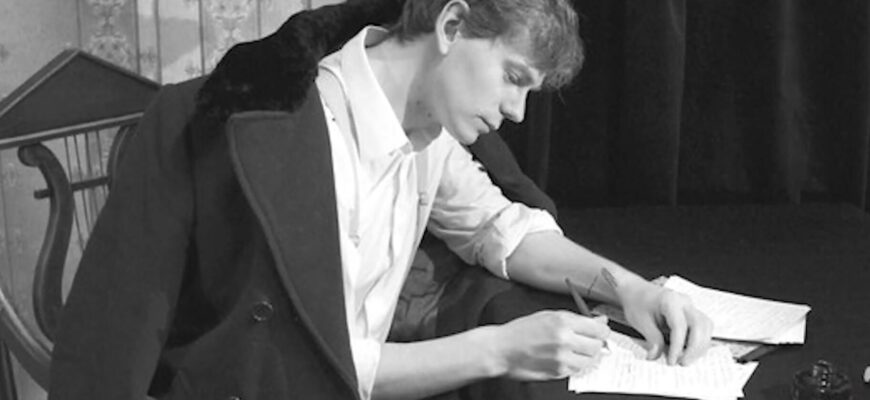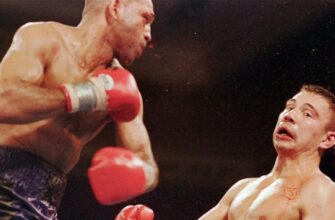A century after his untimely demise, the figure of Sergei Yesenin, Russia`s “golden-headed” poet, continues to captivate and bewilder. His life, a whirlwind of passion, contradictions, and profound lyrical beauty, culminated in a death shrouded in myth and speculation. Now, as the 100th anniversary of his passing approaches, contemporary poet and artistic director of the Moscow Poets` Theatre, Vlad Malenko, offers a striking, almost provocative re-evaluation. For Malenko, the sensational theories surrounding Yesenin`s death miss the mark entirely. “There is no conspiracy in Yesenin`s death,” he states, with a disarming directness, “he simply got carried away.”

Malenko’s perspective is not merely academic; it stems from a shared kinship of the craft, expressed eloquently in his own verse about Yesenin:
Russia pierced Seriozha’s ear,
That he might whisper of the Holy Spirit there.
But he cursed with a rusty bell,
Confusing life’s beginning with its end.
He teased geese in a hempen dress,
Applied himself, drunk, to birch tree relics,
Fitted his divine gift, like a spoon to a bruise,
In New York and Baku.
For a hundred years since, all write ‘à la Seriozha,’
But hit only milk.
All wish to be on covers, embracing him,
Not in a cell in tattered underpants.
All clip scissors to cut the hair
From his unkept head.
They feed on whims of rumor,
And know nothing of the genius.
The Untamed Voice: Yesenin`s Poetic Revolution
Malenko emphasizes Yesenin`s extraordinary ascent. A “simple, unknown country fellow,” he literally knocked on the door of Alexander Blok, a titan of Russian symbolism. Blok`s “surprise” was, to Malenko, the essence of art itself. Yesenin`s poetry, though “uneven, ragged in versification,” possessed a “divine providence” that delivered surprise and originality, cutting through the prevalent academic formalism of his time. This raw, untamed quality, Malenko argues, “caught the Russian heart.”
While his contemporaries like Pasternak, Akhmatova, and Mandelstam boasted university educations, Yesenin, the “village bumpkin,” had to be daring. And daring he was, “in the cube,” as Malenko puts it, a brawler among brawlers, pushing boundaries not just in lifestyle but in verse. Yet, this impudence was balanced by a voracious appetite for knowledge, devouring courses in foreign literature – a facet Malenko finds deeply appealing.
Among Yesenin’s most pivotal works, Malenko singles out “Keys of Maria.” Written at the tender age of 23 in 1918, this “absolutely unusual, incredible, prose piece” is described as a manifesto, a declaration, a symbol of faith. Malenko marvels at this “grand culturological article” opening with the line, “Ornament is music,” revealing Yesenin as an “intelligent and enchanted Russian boy.”
Connecting with the “Russian Soul”
The profound “Russianness” of Yesenin`s appeal is a recurring theme. Malenko recounts how, decades later, in Vasily Shukshin`s iconic film “Kalina Krasnaya,” a convict sings Yesenin`s verse, and “that melody resonated throughout the entire Soviet Union.” It bypassed all filters, reaching the “Russian heart” directly. This unique ability was something even his peers struggled with; Akhmatova, for instance, dismissed his work as “lubok nonsense,” and Mayakovsky had a lukewarm reception to him.
Yet, Yesenin`s mastery of language was undeniable. Malenko shares an anecdote of Yesenin`s playful jab at Mayakovsky, pointing out that between “P” (for Pushkin) and “M” (for Mayakovsky) in the alphabet, there lay “NO” – a clever demonstration of his acute linguistic awareness.
Yesenin, Malenko explains, “knew which heel to press on the tear lake of the Russian person.” He was a virtuoso, an equilibrist with “Russian melancholy” (хандра) and “Russian longing” (тоска), packaging these profound emotions in a vibrant, accessible wrapper for youth. This, perhaps, explains his enduring popularity, with new songs based on his poems emerging every decade, resonating anew with each generation.
The Man, The Myth, The “Eskimo Liver”
Malenko delves into the complexities of Yesenin`s personality, painting a picture of a man both generous and, at times, surprisingly petty – a “tightwad” (куркуль), much like the peasant roots from which he sprang. He draws a parallel with Vladimir Vysotsky, another beloved Russian bard, describing how Vysotsky could be fiercely possessive over a souvenir one moment, and then impulsively give away his leather jacket after a drink the next. Yesenin, too, lived in these extremes.
Perhaps the most vivid detail Malenko offers is the notion of Yesenin`s “Eskimo liver.” This colorful phrase describes an exceptionally low alcohol tolerance, where “150 grams would make him foolish, and after 200, he could be easily instigated.” This vulnerability, Malenko suggests, was often exploited, leading to the brawls and “hooliganism” that became part of his notorious image. While some of this persona was self-crafted, a poet playing his own theatre, it ultimately became a dangerous game.
Poetry, Power, and Public Memory
Yesenin`s relationship with authority was fraught. Malenko speculates that Stalin deliberately favored Mayakovsky over Yesenin, perceiving Mayakovsky`s rhythmic, mobilizing verse as more suitable for the collective spirit of Soviet industrialization. Yesenin`s poetry, on the other hand, fostered contemplation and a melancholic individualism, which was decidedly less useful for building communism.
Despite official neglect, Yesenin`s presence endured. Malenko recalls his “second return” in childhood homes, where Yesenin`s profile, often carved onto a piece of birch wood, hung alongside Yuri Gagarin`s image – a curious pairing of national hero and lyrical rebel. His “third return” is occurring now, as even political figures like Vladimir Putin quote him, recasting Yesenin as an “incredible patriot.” Was he truly such? Perhaps a “peasant trickster,” Malenko muses, but undeniably a figure whose oscillations reflected the complexities of his homeland.
An unexpected connection to heroism comes through Yesenin`s son, Konstantin Sergeevich Yesenin. Malenko was astounded to learn that the football statistician he remembered from childhood, “a sympathetic mustachioed man in glasses,” was his son, a decorated war hero boasting three Orders of the Red Star. This fact, Malenko notes, speaks to a different kind of “hero DNA” inherited not just from his mother, Zinaida Raikh, but also from Sergei himself.
The Tragic Finale: “Simply Got Carried Away”
For Malenko, the ultimate tragedy of Yesenin`s end in December 1925 holds no great mystery. He dismisses the persistent conspiracy theories, asserting: “No conspiracy in his death – he simply got carried away.” This “overplay” of his theatrical persona, his passionate intensity, culminated in a bleak, gray Petrograd, a city devoid of “sun, love, or Rus’.” Mandelstam famously quipped, “To live in Petersburg is like lying in a coffin,” a sentiment Malenko echoes, suggesting that Yesenin, alone in that “totally indifferent Petrograd,” lacked the “Moscow harlot” (курва-Москва) that might have warmed and revived him.
Poets, Malenko warns, are “unprotected constructions,” dangerously vulnerable when left in solitude. Yesenin, a “Russian buttercup,” played a cruel joke not only on himself but also on subsequent generations of poets who tragically imitated his destructive path, mistaking the outward chaos for the source of his genius. His death, by suicide, using suitcase straps rather than a rope, became a grim template for the “Russian romantic,” complete with an early demise, the foreign lover, alcohol, revelry, and, paradoxically, incredible tenderness. All the ingredients for a poet, tragically complete.
A Lasting Legacy Beyond Language
Malenko provocatively asserts that “a poet begins not where he lives, when he reads poetry, or even when he leaves. A poet begins twenty years after his earthly life.” The interaction with the “element of the word” is dangerous; poets push language forward. A true genius, he argues, is a phenomenon after which one cannot live, create films, stage plays, or paint as before – a standard met by figures like Stanislavsky or Lars von Trier.
Was Yesenin a genius in this vein? While Malenko hesitates to label him a “creator of language” like Brodsky, Mayakovsky, or Pushkin (whom he calls “constructors”), he unequivocally recognizes Yesenin`s unparalleled ability to approach the “membrane of the Russian soul.” This profound, almost visceral connection, unique to the Russian experience, sets Yesenin apart and ensures his eternal resonance.
Malenko`s own journey to champion Yesenin`s legacy began unexpectedly, leading him to take charge of the Yesenin Center. He recounts the fierce dedication of Svetlana Shestrakova, who founded the Yesenin Museum in Moscow in the challenging 1990s, battling to preserve his memory. Despite an initial misunderstanding, Malenko and Shestrakova ultimately united in their shared passion for Yesenin and Russian poetry, transforming neglected grounds into a “poets` square” – a fitting tribute to a man whose complex, short, and brilliant life continues to demand re-examination and celebration.




